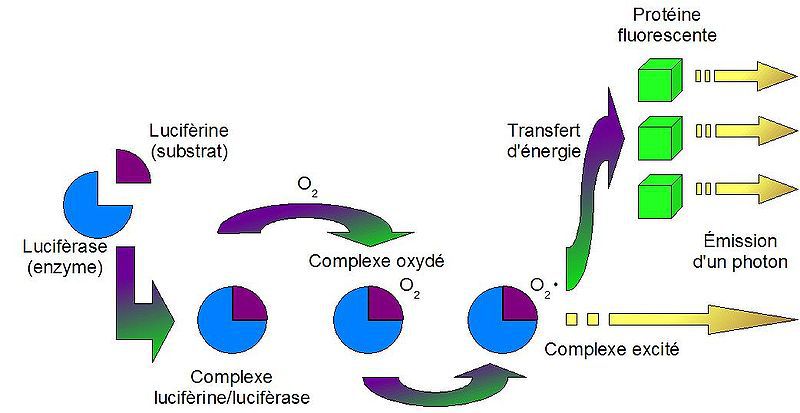-
 Nucleoside monophosphate
Nucleoside monophosphate
-
 Dendrochronology
Dendrochronology
-
 M82
M82
-
 Gait
Gait
-
 Inclination
Inclination
-
 Convention on Biological Diversity
Convention on Biological Diversity
-
 Retractile
Retractile
-
 Wardriving
Wardriving
-
 Friction
Friction
-
 Hyperion
Hyperion
-
 Gestation
Gestation
-
 ERS-2
ERS-2
-
 Metastable
Metastable
-
 Conductivity
Conductivity
-
 Electroweak theory
Electroweak theory
-
 Dashboard
Dashboard
-
 Pleochroism
Pleochroism
-
 3G
3G
-
 Aristolochia
Aristolochia
-
 Julian year
Julian year
-
 Partial unbundling
Partial unbundling
-
 mRNA
mRNA
-
 Salmonella
Salmonella
-
 Neoadjuvant
Neoadjuvant
-
 Stamping mill
Stamping mill
-
 Ribavirin
Ribavirin
-
 Geodesics
Geodesics
-
 Bombesin
Bombesin
-
 Metamict
Metamict
-
 New Technology Telescope
New Technology Telescope
Bioluminescence
Bioluminescence is the production and emission of light by an organism.
Light is emitted as a result of a biochemical reaction between a protein substrate, luciferin, and an enzyme, luciferase.
When these two proteins meet they bind in a complex which catalyses the luciferin dioxygen reaction by oxygen (O2). Oxidation changes luciferin from a stable state into an unstable electronically excited state.
When it returns to its stable state, luciferin emits a proton that produces light generally in the blue and green spectrum. The luciferin – luciferase complex separates generating a CO2molecule. The two proteins are then available for a new reaction cycle.
The light produced can then be reflected or amplified by other organic structures.
Symbiotic bacteria are usually responsible for these reactions although some groups such as the Lampyridae (glow worms and other Luciolae) produce their own luciferin and luciferase proteins.
Scientists believe that bioluminescence may have four functions for organisms:
- Camouflage Fish and other marine animals use their bioluminescence to be less visible to predators beneath them as when they are luminous they stand out less from the light surface above them.
- Attraction of sexual partners or prey.
- and repelling predators. Injecting a luminescent fluid may disturb a predator during an attack, making it easier for the prey to escape;
- Visual communication.
 Diagram of the biochemical mechanism of bioluminescence. © ElfeJediBiochimiste, Wikimedia CC by-sa 3.0
Diagram of the biochemical mechanism of bioluminescence. © ElfeJediBiochimiste, Wikimedia CC by-sa 3.0
Latest
Fill out my online form.



